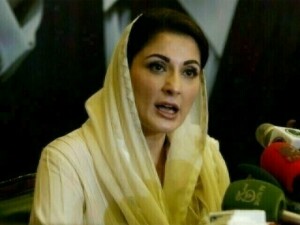Pakistan’s economic crisis is largely due to its power sector: experts propose bypassing govt
Pakistan, the world’s fifth most populous country, has a power sector problem and experts believe this is a core reason for its struggling economy where the growth rate has not been sufficient for a number of years.
Its energy sector, where the government has jacked up power generation capacity to 43,775MW but transmission lines are only able to handle 22,000MW, is currently one of the hottest topics as tariffs have increased substantially over the last year or so. Ironically, the government has planned adding more, possibly another 17,000MW.
But experts are raising questions on the people’s capacity to bear the extra burden.
During the ‘Advancing CTBCM – A Multi-Stakeholder Conference’, a conference held on Tuesday, industry leaders questioned the government’s competence to run the electric grid.
They expressed concerns about excess generation capacity and costly take-or-pay contracts.
Pakistan pays fixed charges to IPPs (Independent Power Producers) irrespective of whether the country uses electricity or not. Amid increased power tariffs, electricity consumption from the grid has dropped further, lending yet another blow to the energy sector.
According to a Pakistan Credit Rating Agency (PACRA) report published in February this year, the financial cost of transmission losses stood at around Rs30.794 billion in fiscal year 2023.
Meanwhile, according to a report published by Business Recorder, the Power Division has also claimed that during Financial Year-2023-24, it is apprehended that the Distribution companies (DISCOS) may make a loss of around Rs589 billion which includes under recovery and loss above the National Electric Power Regulatory Authority (NEPRA)-defined threshold.
Power sector’s circular debt reaches Rs2,655bn by May
Hence, experts have advocated the Competitive Trading Bilateral Contract Market (CTBCM) regime that allows bulk power consumers to purchase electricity directly from generators, bypassing the government.
However, the market structure followed in Pakistan has been a single-buyer model in which CPPA (as a single-buyer) purchases electricity on behalf of ex-WAPDA distribution companies (DISCOs).
In November, 2020, NEPRA approved a CTBCM model that provided a roadmap for opening the Wholesale Electricity Market of Pakistan, aiming to provide choice to the bulk power consumers (with 1MW or above load) to purchase electric power from the DISCOs or a competitive supplier of their choice.
Former NEPRA Chairman Tauseef H. Farooqi, who takes pride in pushing the CTBCM case during his tenure, said that CTBCM is make or break for the Pakistan economy.
“(Implementation of) CTBCM is the only solution to resolve Pakistan’s energy woes. And the electricity issue is at the heart of Pakistan’s economic crisis,” Farooqi told Business Recorder at the sidelines of the conference.
Power sector woes: PM Shehbaz assigns tasks to ministries
“Existing structure of governance cannot take Pakistan out of the quagmire. CTBCM was crafted keeping this fact in view.
“CTBCM empowers the business community to buy electricity from whoever they want just like any other commodity. Unless the cost of doing business doesn’t go down, 250 million people in Pakistan will not be able to increase GDP, create jobs or increase exports.”
He added that by buying electricity at 17 cents (per unit) Pakistani businesses will not be able to compete against global or even regional rivals.
Asif Inam, Vice President of FPCCI and Chairman of APTMA, stressed the textile industry’s stake in the success of CTBCM, noting that competitive energy prices are essential for survival in the global market.
Inam said that Indian businesses are receiving electricity at 4.5 cents and competing against them and even against Bangladesh is next to impossible. He added that Pakistani businesses will continue to relocate to places like Bangladesh if this situation continues.
PM Shehbaz announces action against officials overcharging electricity units
Ahad Nazir of Sustainable Policy Institute (SDPI) said monopolies and collusions are common in the country. However, competitive pricing mechanisms, the implication of CTBCM, will reduce energy costs for consumers citing European Union example.
“The EU’s liberalised electricity markets have shown a reduction in household energy prices by 10-15% due to increased competition and efficiency gain. By fostering competition among power producers in Pakistan, consumer electricity prices could potentially decrease, improving affordability for households and businesses,” he said.
Shaheera Tahir, Researcher at Policy Research Institute for Equitable Development (PRIED), said that before transforming from one market structure to another market structure, there is a need to ensure that it is ‘just’ and considerate of impacts on end-consumers.
“Moving towards a market based electricity generation, supply, and distribution is indeed very critical juncture in the power sector although it’s not something altogether new.
“It was discussed earlier in 1990s but today after decades, we see that the whole regulatory framework has been crafted to enable its implementation. This is promising, but should not be carried out unless certain prerequisites are checked. The most critical would be to ensure that the transformation from one market structure to another market structure is ‘just’ and considerate of impacts on end consumers and have a plan for capacity building and transition of existing workforce.”
According to NEPRA 2022 yearly report, of Pakistan’s total installed power generation capacity of 43,775MW, 59% of energy comes from thermal (fossil fuels), 25% from hydro, 7% from renewable (wind, solar and biomass), and 9% from nuclear.
The conference was also ironically organised by Renewable First, a think-tank for energy and environment, and Pakistan Environment Trust.
“The cheapest electricity comes from renewable sources such as solar and wind,” Zeeshan Ashfaq, CEO Renewable First, told Business Recorder. “If CTBCM is implemented, renewable energy will see mushroom growth.”
CTBCM wouldn’t just have a price impact, its sustainable part would have a larger impact, across borders, stressed Dr Khalid Waleed of Sustainable Policy Institute (SDPI).
He said that the export-based industry will see increased international regulations and compliance requirements to reduce GHG (greenhouse gas) emissions.
Policies such as EU’s Carbon Border Adjustment Mechanism (CBAM) and major global brands’ net-zero commitments mandate Pakistan’s industrial sector to cut down its emissions to net zero by 2050 along their entire supply chains.
“Clean and green electricity sources are rapidly moving from merely providing a competitive edge to a non-negotiable business condition for industry players,” he said.
The conference concluded with the presentation of a Charter of Demands, endorsed by major industrial associations and chambers.
The charter calls on the government to announce a competitive figure for use of system charge and the date of the first bilateral transaction to open the electricity market for business.
























Comments
Comments are closed.